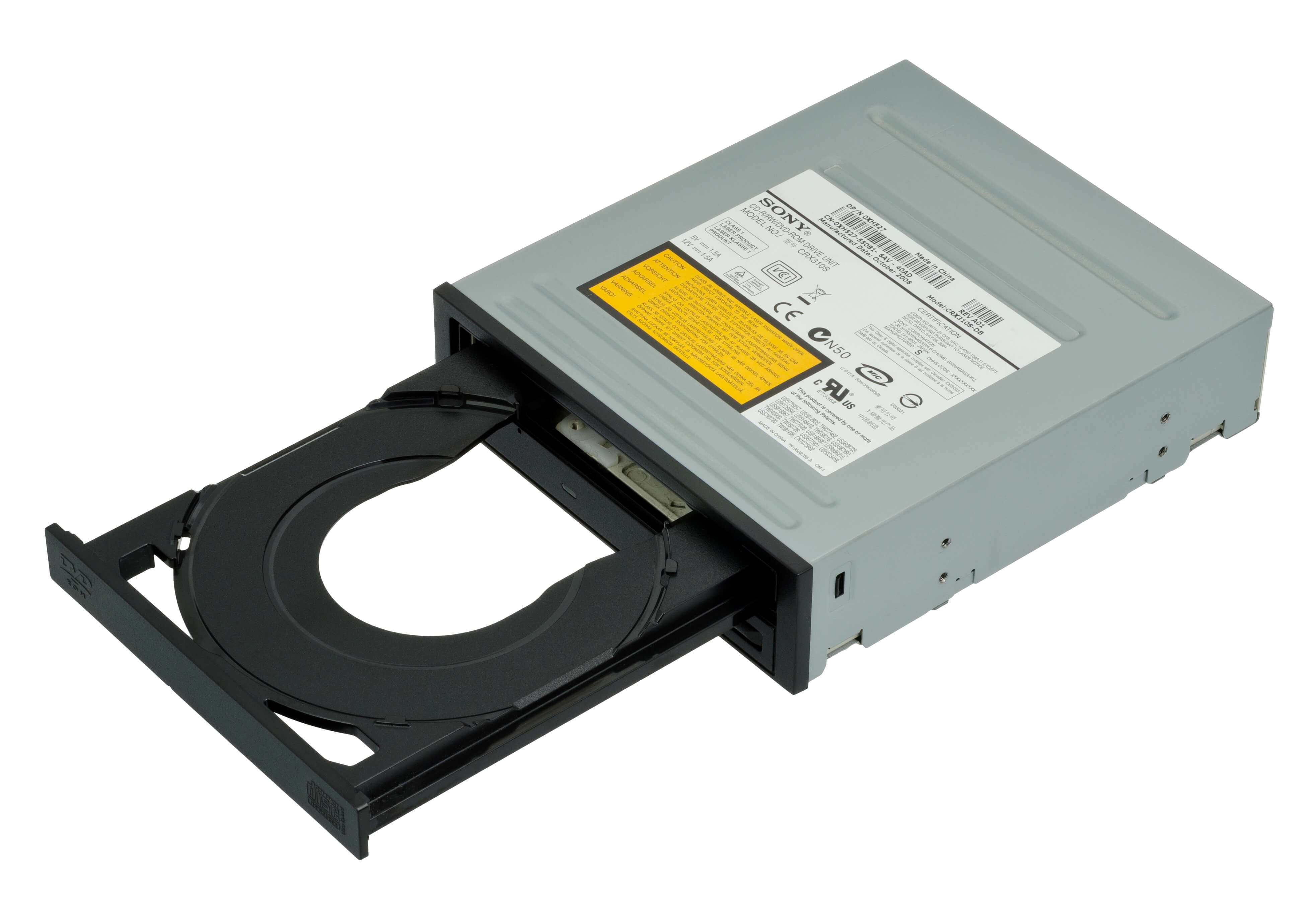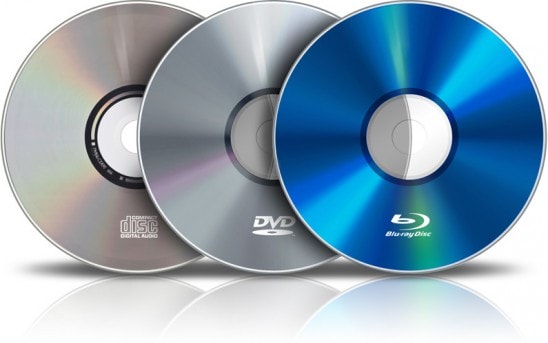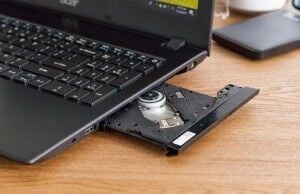
A computer system with an optical drive allows users to use DVDs, Blu-ray discs, or CDs. However, the iCloud market and other better data management devices have supplemented this visual drive method. As a result, optical drives have become less common than before.
While many people still prefer touchable and visible storage devices to digital ones, they must know how an optical drive works and when they would need an optical drive. That's what we will introduce in this guide. Keep reading.
In this article
What Is An Optical Drive?
An optical drive is like a luminosity that can observe and read the data provided by the optical disks. Optical drives have almost replaced magnetic drives since the laser technology of optical disc drives makes it more convenient than magnetic drives' magnetic storage media for data storing.
The optical drive is associated with multiple optical discs such as Blu-ray, CDs, or DVDs, and it is commonly used for installing various software from discs.
Optical drives work by rotating the disc at a constant speed, measured in RPM (rotation per minute). The drive uses advanced high-tech laser beams to read and observe the data, and its interface is smaller than computers.
There are various types of optical discs. From which, we can divide them into readable, erasable, or writable discs. The discs include CD-ROM, CD-R, CD-RW, DVD-ROM, and Blu-ray discs.
CD, DVD And Blu-ray Disk
Features |
CD |
DVD |
Blu-Ray |
| Storage | 700 MB | 4.7 GB (single layer) | 25 GB (single layer) |
| Disc diameter | 120mm | 120mm | 120mm |
| Disc thickness | 1.2mm | 1.2mm | 1.2mm |
| Hard coating | Yes | Yes | No |
| Protection layer | 1.2mm | 0.6mm | 1.2mm |
| Material | Acrylic Plastic | Polycarbonate plastic | Multiple layers of polycarbonate |
CD
CD stands for compact discs, a digital data storage device that is read by the optical drive with the help of laser beam technology. It can be easily handled and does not require special knowledge to operate a compact disc. 650.55 or 700.09 MB of data can be stored on a conventional 120 mm CD-ROM.
Features of CDs
- made up of plastic and reflective material.
- available to store audio, video, and text files.
- portable and easy to use without any special software.

DVD
DVDs are called Digital Versatile Discs, which are optimum for storing digital data. A type of optical disc similar to a CD's size will have much more storage capacity. The difference between DVDs and CDs is that DVDs have dual sides, whereas CDs have only one side. Based on storage capacity, DVDs can store anywhere from 4.69 GB to 16.99 GB.
Features of DVDs
- more magnificent in terms of storage.
- it is widely used to store computer files or video programs.
- specific in terms of the type of disc.
Blu-ray disc
The Blu-ray disc is a highly formatted storage disc that can store approximately four times more data than a CD or DVD. Blu-ray discs can store data up to 100.058 GB. Actual Discs read speeds of 4.501 MBps before. But, the present scan speed of these discs is approximately 8.99 MBps to 35.99 Mbps.
Blu-ray Disc Advantages
- the data stored on Blu-ray Disc is rewritable and recordable.
- it enables us to produce high-quality playback videos.
DVD-R And DVD+R
S.No. |
DVD-R |
DVD+R |
| 1 | Data cannot be formatted | Data can be formatted |
| 2 | Cheaper | More expensive |
| 3 | It can be used only once to record data | It can be used multiple times |
| 4 | Its format is officially approved | It is not officially approved |
| 5 | It is less efficient than DVD+R | It is more efficient than DVD-R |
| 6 | There is more risk of errors | There is less risk of errors |
DVD-R
The term DVD-R means Digital Versatile Disk Recordable and is pronounced as DVD "dash R" or "minus R." It is a disc designed to write the data once, but it allows us to read that data multiple times. The format of this disc has been officially approved. Its design is almost the same as the regular DVD drive. It functions at the location of the laser beam by using the tiny particles on the disc.
DVD-R Specifications
- cheap
- it uses LPP criteria for speed control.
- land permits to process data.
DVD+R
DVD+R refers to Digital Versatile Disk Recordable as well. It is marked as DVD "plus R." It is the updated version of the DVD-R disc, allowing users to format the written and recorded information. However, this version is not officially approved by the DVD and does not contain any logo from the DVD.
DVD+R Specifications
- efficient results
- the ADIP system determines the working of the laser.
- simultaneous formatting
Recordable Disc And Rewritable Disc
S.No. |
Recordable Discs |
Rewritable Discs |
| 1 | Data cannot be changed | Data can be rewritten and re-recorded |
| 2 | Its writing speed is double the rewritable discs | Its writing speed is less than recordable discs |
| 3 | These discs include DVD-R and CD-R | These discs include DVD-RW, DVD+RW, and DVD-RAM |
Recordable Disc
A recordable disc is a disc on which you have no flexibility to change the data, which works as a one-time recordable disc. It has a dye-based layer that assists in recording media files, like audio, video, photographs, and data files. If you do not need to rewrite or format the recorded data, this kind of disc can be your favorite. And these discs have an 8X writing speed with a 24% reading speed.
Features of a Recordable Disc
- quick and effective
- It is less costly
Rewritable Disc
In contrast, a rewritable disc provides so much more flexibility to you than the recordable ones. It allows you to rewrite the data or re-record data onto your disc. You can use this disc multiple times and for the long term. Though it is a little expensive, it is worthy because of its reusability. Rewritable discs use a laser of a higher power than recordable ones. And they have a 4X writing speed with 32X reading speed.
Features of the Rewritable Disc
- multiple rewrites
- it uses its particular RW drives.
- economical
Features of An Optical Drive
Since the advent of DVD drives, you might soon discover another version of the drive will be in front of us. Nowadays, however, many PCs and laptops come with optical drives, and only a few people still use floppy discs. It might be rather difficult even to find a computer these days that can read a floppy disk. So, here are some features provided by us. We are sure that these features will help you decide whether to use optical drives or not.
- Optical disc drives read waves near the light spectrum using a laser or an electromagnetic head.
- This uses light to read and access the information provided by the user. In addition, this drive helps store macro details in a small space.
- It is faster than traditional magnetic drives.
- It gives you the ability to read and write at a more rapid pace.
- Optical drives can save your space as well as time.
Internal Optical Drive (IOD) And External Optical Drive (EOD)

An external optical drive is an optical drive that is placed outside the chassis. Whereas an internal optical drive is a built-in optical drive that is stable in the device.
External optical drives include USB 2.0, USB 3.0, and USB C, but on the other hand, internal visual purposes include Panasonic, Samsung, Lite-on, or other drives. Both industries are different because the visible internal movement is immovable. In contrast, the external optical is portable and mobile.
S.No. |
Features |
Internal Optical Drives |
External Optical Drives |
| 1 | Usability | It can be used daily | It cannot be used daily because it needs immediate pull (which could bring cracks to the cable) |
| 2 | Installation setups | In-built and complex | Simple and is connected via cable from outside |
| 3 | Working Speed | Faster (as it is closer to the computer) | Slower (as it is connected through a long USB wire) |
| 4 | Time consumption in uploading and downloading the documents | Takes less time | Takes more time |
| 5 | Portability | Not portable | Portable |
| 6 | Back-up | A virus could corrupt it | Safe and provide extra protection to the data |
| 7 | Frequent plug-in | Difficult to replace | Easy to use on laptops and computers |
Optical Drive Media Formats
Various optical drive media formats are used for different operating systems. These media formats are like a system architecture that manages the files and volume of information or passes the directory to the system. So for example, an optical drive can store video files, games, multimedia files, directories, and so on. And the optical drive media formats are to record and observe data.
The commonly used optical drive media formats are DVD, DVD-R, DVD+R, DVD+RW, CD-RW, CD-ROM, CD-R, and DVD-RAM.
Video Tutorial on Optical Disk Explained
How to Recover Data from a Damaged Optical Drive?
It happens that the optical disk gets scratched or lost, which can cause the disk unreadable, and then all the data will get lost. Then is it possible to recover data from the damaged optical drive?
Wondershare Recoverit is a data recovery software that empowers you to restore data from various places. Any form of data is recoverable, like word documents, image files, media files like audio and video, etc. All you need to do is install the app, select where you need to recover the data, then click Recover to let the app scan the disc and restore the files you are trying to get back.
Click here to get more information about recovering data from DVD drives.

 ChatGPT
ChatGPT
 Perplexity
Perplexity
 Google AI Mode
Google AI Mode
 Grok
Grok























